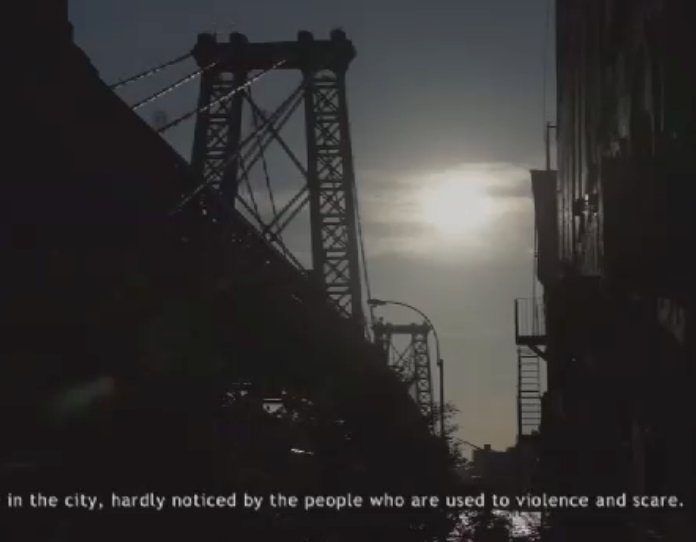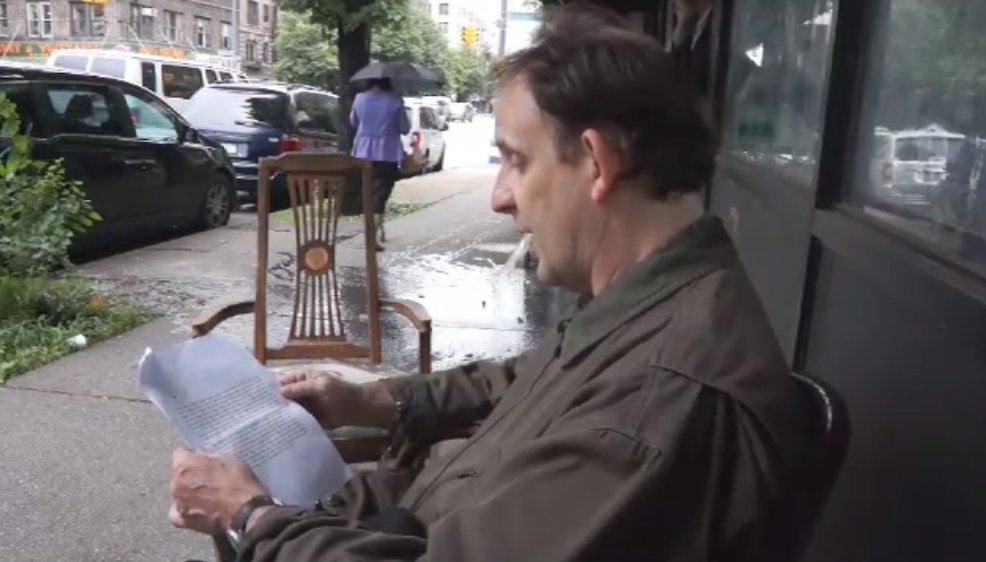

click link below to play!
In the fall of 1979, the four of us rented two apartments in a building on the corner of Broadway and Berry Street, in Williamsburg, Brooklyn. We were white college boys who thought of ourselves as film-makers and even were film-makers, for tax purposes, having recently served as a skeleton crew for a Radio-Televisione Italiana documentary about cures for heroin addiction. Two of us were native New Yorkers, the other two were not. We stayed in the neighborhood for the next several years.
A Tree Grows In Brooklyn is set in Williamsburg. It was a rough Irish and East European neighborhood back then. At the end of the 1970s it was a rough Hispanic neighborhood, though not so dangerous as it looked at first glance. We could count on getting burglarized at least once a year, but it was relatively safe on the street, at least for reasonably fit young men. No victim population for mugging had turned up yet, and violent crimes usually took place between people who already knew each other. If you wanted to find a boho hipster aspiring artist back in those days, you’d have needed to talk to one of us personally. Our landlords were from the local Hasidic community, who still owned real estate down to the river but whose own population had shrunk into a much smaller enclave along Lee Avenue. The several blocks of South 8th Street between our building and Hasidic headquarters were burned out, with many buildings collapsed to rubble.
After that first job, none of us had much luck finding any more paying film work. For one thing the business was mostly unionized, and the unions were hard to crack. The video revolution hadn’t quite happened yet, so independent film was 16 millimeter and expensive to execute, even with skeleton crews. Our artistic film projects didn’t materialize. After a while I figured out that writing fiction had a much lower overhead. My first handful of novels were set in street-level New York, and all of them featured a big scene on the Williamburg Bridge, “your white whale,” a writer friend said to me not long after.
One of us went to West Berlin, where he met Germany’s answer to Marilyn Monroe. When he was over there with her, one of her roommates would take his room, sharing the apartment with me. Angela Zumpe was fluent in German and Hungarian when she first arrived, but her English was limited. I helped her find her feet in the neighborhood. Eventually she did become a filmmaker (you can see more at http://paste-up.de/). Thirty years later we took a walk around the old territory, which back then was the setting for my second novel, Waiting for the End of the World,* and were recorded, at a quality approximating 16mm, on a chip in a digital still camera.
Big changes! Best I can figure, most of the old Hispanic population has long since been forced out. I couldn’t afford to rent in 21st century Williamsburg myself. The artist community we pioneered for seems to have become chiefly a subject of satire, even to itself. The bohemian frontier is somewhere out in East New York nowadays (a region I once hesitated to ride through on the train). Of all the differences, the one I like best is the renewal of the Hasidic community, which has grown back to rebuild those dead blocks of South Eight Street. They are full of children now, and these days –an unthinkable thing thirty years ago—it’s common enough to see the young Hasidic husbands promenading their wives on the now-overcrowded walkway of the Williamsburg Bridge.
Thanks to Mechthild Schmidt for the English translation! The entire novel's available here:
http://www.openroadmedia.com/books/waiting-for-the-end-of-the-world.aspx?bli=1#bookDetail
For another blast from the Williamsburg past, here's this:
http://mrbellersneighborhood.com/2009/04/the-diner
